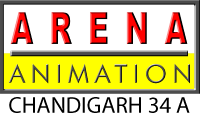3D animation is the creation of moving images in a three-dimensional digital space, adding depth to visuals for a more lifelike effect. It involves designing characters, objects, and environments to interact in a 3D world, offering a more realistic and dynamic visual experience compared to 2D animation.
Key types of 3D animation include character animation (creating animated characters for films and games), motion graphics (animated graphics for media and marketing), and visual effects (VFX) (realistic simulations for movies). Stop-motion animation is also a type where physical objects are animated frame by frame.
The 3D animation process involves several stages: concept design, modeling (creating objects and characters), texturing (adding surface details), rigging (building movement skeletons), animation (bringing movement to life), lighting and rendering (final look), and compositing (merging all elements into the final animation).
3D animation is used in film and TV (animated characters and visual effects), video games (character and environment design), advertising (commercials and product demos), medical and architectural industries (visual models and simulations), and VR/AR (immersive experiences). It enhances creativity and innovation across various field.
What is 3D Animation?
In this section, we will introduce 3D animation, explaining what it is and how it differs from traditional 2D animation. This will include an overview of the creation process, from modeling and rigging to rendering. We will also touch upon the rise of 3D animation across various industries and how it has evolved in the digital era, with the latest advancements in tools and techniques.
Differences Between 2D and 3D Animation
Here, we will compare the fundamental differences between 2D and 3D animation, such as the visual styles, creation techniques, and their applications in various media. While 2D animation is flat and more traditional, 3D animation offers more depth, realism, and flexibility in storytelling. We will explore how these differences impact the quality of visuals, and the time and effort required for production. This section will also discuss the use of hybrid techniques in modern animations, merging both 2D and 3D elements.
This part will explore the many practical uses of 3D animation across industries in 2024. From film and television, where 3D animation is used to create lifelike characters and environments, to video games where it adds realism and immersion, we will cover its significance. We will also look at its applications in architecture, medical simulations, advertising, and virtual reality (VR) experiences, demonstrating its versatility in shaping visual storytelling and practical solutions.
3D Animation Process
In this section, we will break down the step-by-step process involved in creating a 3D animation. From concept art and storyboarding to modeling, texturing, rigging, and animation, we will dive into each stage of the production pipeline. The importance of lighting, rendering, and post-production editing will also be covered, showing how each step plays a vital role in bringing 3D content to life. We will include the latest tools and software used in each stage, offering insight into the most effective workflows in 2024.
Tools and Techniques
In 2024, 3D animation has become more accessible and efficient with cutting-edge tools and software. This section will provide an overview of the industry-standard tools like Blender, Autodesk Maya, Cinema 4D, and 3ds Max, highlighting their unique features and benefits. We will also touch on motion capture technology and procedural animation techniques that are used to create hyper-realistic movements. Additionally, we will examine the integration of AI-based tools in 3D animation, such as deep learning algorithms for automating rigging and motion creation.
Advanced Topics and AI in 3D Animation
As AI continues to evolve, it is significantly impacting 3D animation. This section will explore the role of artificial intelligence in automating repetitive tasks, improving workflows, and enabling creative advancements. We will discuss AI-driven animation tools, procedural content generation, and how machine learning is used for more efficient rendering and realistic facial animations. The use of AI in creating complex simulations and effects will also be discussed, highlighting how these technologies are pushing the boundaries of what’s possible in 3D animation.
What Are the Benefits of 3D Animation?
This section will focus on the advantages of using 3D animation, especially in a professional context. We will explain how 3D animation enhances visual storytelling, boosts engagement, and improves brand recognition. In addition, it will demonstrate how 3D animation makes it easier to visualize complex concepts and ideas in fields like science, education, and engineering. We will also address its role in creating immersive experiences in virtual and augmented reality (VR/AR) environments.
Future Trends in 3D Animation
The future of 3D animation looks promising with continuous advancements in AI, VR/AR, and real-time rendering. This section will explore how the industry is heading towards hyper-realistic animations and virtual worlds powered by real-time game engines like Unreal Engine 5. We will discuss emerging trends like virtual influencers, the use of cloud-based rendering, and the potential of interactive 3D content in entertainment and beyond. This section will provide a forward-looking perspective on the evolution of 3D animation, particularly in the context of the metaverse.
Need Help? Hire a Freelance 3D Animator
If you need assistance in bringing your 3D animation ideas to life, this section will explain the benefits of hiring a freelance 3D animator. We will discuss the importance of choosing the right professional based on your project’s requirements, budget, and timeline. The section will provide tips on where to find talented animators and what to look for when evaluating portfolios. Hiring a freelancer allows flexibility and access to specialized skills without the overhead costs associated with hiring in-house teams.


